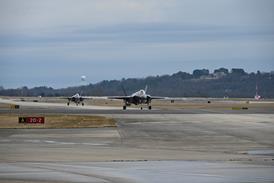Most US general aviation commercial transport aircraft accidents, especially fatal ones, happened in Alaska until recently. A high proportion were caused by visible meteorological conditions (VMC) to instrument meteorological conditions (IMC) flight, resulting in either CFIT or LV-LOC (see main text). At the end of May, however, phase two of a programme - launched in 2000 - to employ ground and airborne new technology equipment was set to be completed, with the last of the local operators' aircraft fleets retrofitted with avionics that took them effectively from the 1950s to the 21st century.
Under the Capstone Safe Flight 21 joint government/industry programme, operators flying mostly small piston twins upgraded old cockpits with primary flight displays and navigation/multifunction displays that provide pilots not only with accurate satellite navigation, but real-time weather, traffic, and terrain awareness and warning information. The fundamental enabling technologies are GPS satellite navigation with the wide area augmentation system and automatic dependent surveillance - broadcast (ADS-B), but a host of inputs using the ADS datalink enables the aircraft to broadcast its position to air traffic control and other aircraft, and to uplink weather and other operational data to the cockpit from the ground-based flight information service - broadcast (FIS-B).
Source: Flight International























